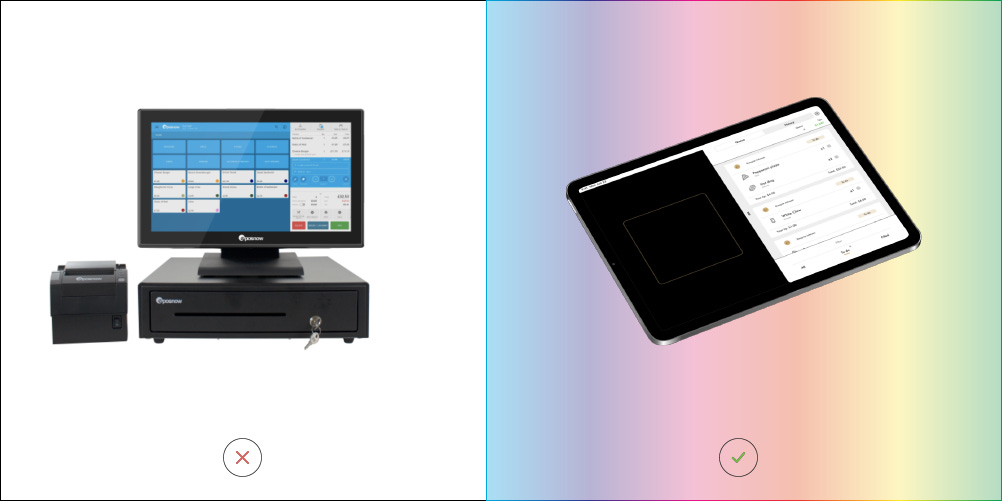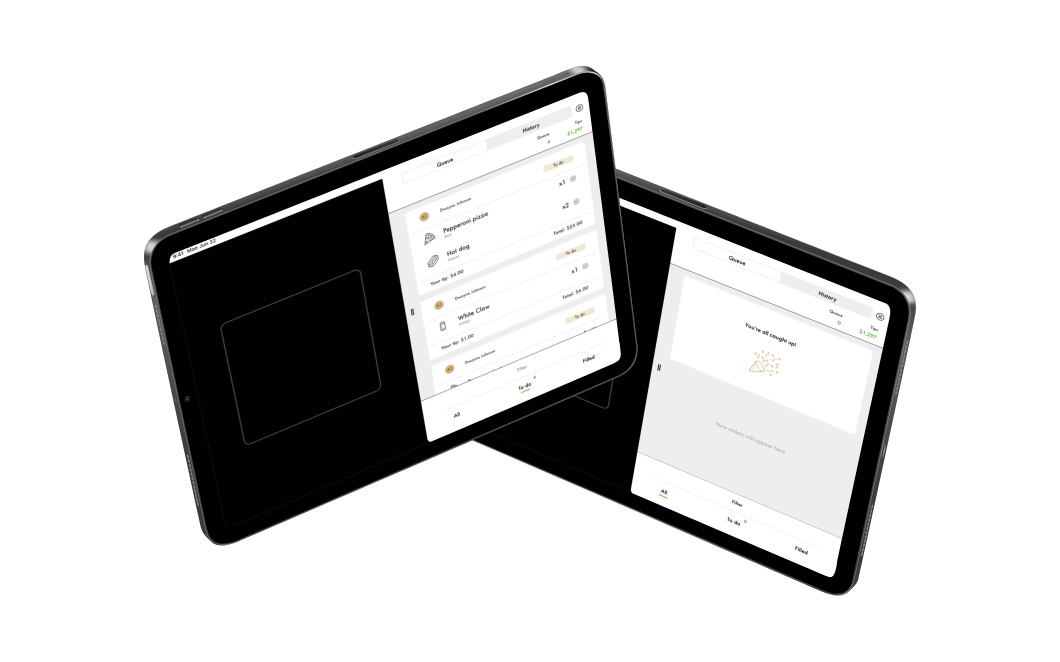Mobile point of sale that eliminates long lines
This is Part 2 in a multi-episode edition on Line Mogul.
Customizable iPad point of sale
Point-of-sale has evolved rapidly over the last decade, much in part to companies like Square and Shopify that have provided both hardware and software for sellers. Traditional point of sale systems, aka cash registers, came equipped with cash drawers and paper receipt printers. Square, for example, has modernized these selling terminals by removing unnecessary hardware components while dramatically improving functionality with software.
Line Mogul is building a point of sale for sellers in the entertainment industry. Venues and merchants such as hockey arenas, golf courses, festival grounds, concert halls, and the likes now have a point of sale system evolving to fit their specific needs. Vendors can create as few or as many lines as they’d like, create or customize each line store, and deploy iPads to employees. These sellers are unique and have unique needs for both their point-of-sale systems and the tools built inside of them, so what makes Line Mogul’s point-of-sale system different from the likes of Square, Shopify, or Lightspeed?
Digital lines.
Long lines
Wait time plagues in-person sellers. Many retail point-of-sale categories are moving to e-commerce (clothing stores, grocery stores, shoe stores) but this is mostly irrelevant for sellers in the entertainment industry who are hosting customers for entertainment events such as concerts, basketball games, golf tournaments, or hockey games. For a minute (probably longer), there was a debate about which of these events would transition away from in-person events. Now, the people have spoken. These live entertainment events are special and we want to get back to the electric atmosphere of crowded venues.
Wait time continues to and always has plagued these venues. 45% of patrons will abandon a line1, event-goers spend roughly 1/5th of event time waiting in a line2, and $20 is the amount that US fans, on average, said they would spend additionally for food & beverage if wait times were cut in half. That represents a 42% increase in typical expenditure (per party, per game)3. Line Mogul is a technology company building a point of sale ecosystem to support sellers that are looking to decrease wait time and eliminate long lines.
What is the fundamental solution to removing long lines at live venues?
Line Mogul is using digital lines to reduce wait time, further eliminating long lines. In order to create digital lines, orders and transactions at the venue must be digital. If all transactions at the venue are in digital lines, it becomes possible to avoid crowd congestion, reduce wait times, and eliminate long lines.
To facilitate digital transactions at live venues with Line Mogul, merchants can customize and deploy iPad’s to employees as their ‘point-of-sale terminal’ or in place of a cash register, Square terminal, or similar. Individual employees receive permissions for the point-of-sale that fits their needs. Servers on the go might have different selling needs than a stationary beer line, so it’s a focus to be able to customize your iPads for each employee use case. In conventional Line Mogul lines, employees see orders appear in the live queue as customers place mobile orders on their phones. This allows employees to see orders in advance of customer arrival, and prepare the necessary items before they’re there to grab their order. This is dramatically faster than long-established word to mouth orders but is also much more simple for employees. Mobile ordering for employees and customers, as opposed to traditional word to mouth orders, is superior in almost every way.
Factors slowing the transition from word to mouth ordering to digital ordering:
1) Venues with traditional cash POS historically resistant to adopt digital solutions like mobile ordering and digital payments.
To unlock digital lines, venues have to support mobile ordering. Coronavirus forced digital transformation for sellers previously resistant to adopting digital selling solutions that allow for mobile orders (capitalism).
2) Consumer behavior, event-goers had ‘if it ain’t broke don’t fix it’ mentality with word to mouth ordering.
People had to learn and become comfortable with ordering on their phones while at a live event. Consumer behavior has shifted over the last two years as customers of all types have been forced to try mobile ordering to participate in society and commerce.
3) Slow downloads and bad connection in crowded venues made mobile applications ineffective.
Slow downloads and connections were a showstopper for mobile ordering as phones became useless when in crowded arenas or concerts. Latency, even in crowded venues has improved to become a non-issue. Improving connection is allowing for instant downloads and improved functionality of native mobile applications in crowded venues. Venues with high capacity are also adding solutions like wifi to improve connections.
Enter the era of digital lines.
Why do digital lines eliminate wait time?
3 core things happen when the line goes digital:
1) Digital orders allow for digital queues
Building digital line queues are not possible when doing word to mouth ordering processes, and by moving to a digital order and transaction, a digital queue system can sort and handle orders throughout a venue. We have only just begun to identify the vast functionality of these live queues.
2) Display live and accurate wait times to users
Users seeing legitimate wait times before making an order push the newest orders to the shortest lines. This is a big deal and because customers making an order are in a digital line, we can actually evolve line wait times to be exceptionally accurate. This will be a long-term competitive advantage for Line Mogul, but most importantly helps event-goers always enter the shortest lines available.
3) Allows employees to see orders before you are in front of them
When you begin your order you save a spot, but also appear in the live queue upon completing your order. This shows employees what items they need to fill to complete your purchase before you are ready to scan in to complete the transaction. For customers, it’s an instant delight scanning at the front of the line, grabbing your items, and being on your way 5x as fast as conventional orders. For employees, selling is simplified to watching the live queue and filling orders.
-LUCAS
https://www.oracle.com/a/ocom/docs/dc/em/fan-experience-report-fb.pdf
https://www.oracle.com/a/ocom/docs/dc/em/fan-experience-report-fb.pdf
https://www.oracle.com/a/ocom/docs/dc/em/fan-experience-report-fb.pdf





